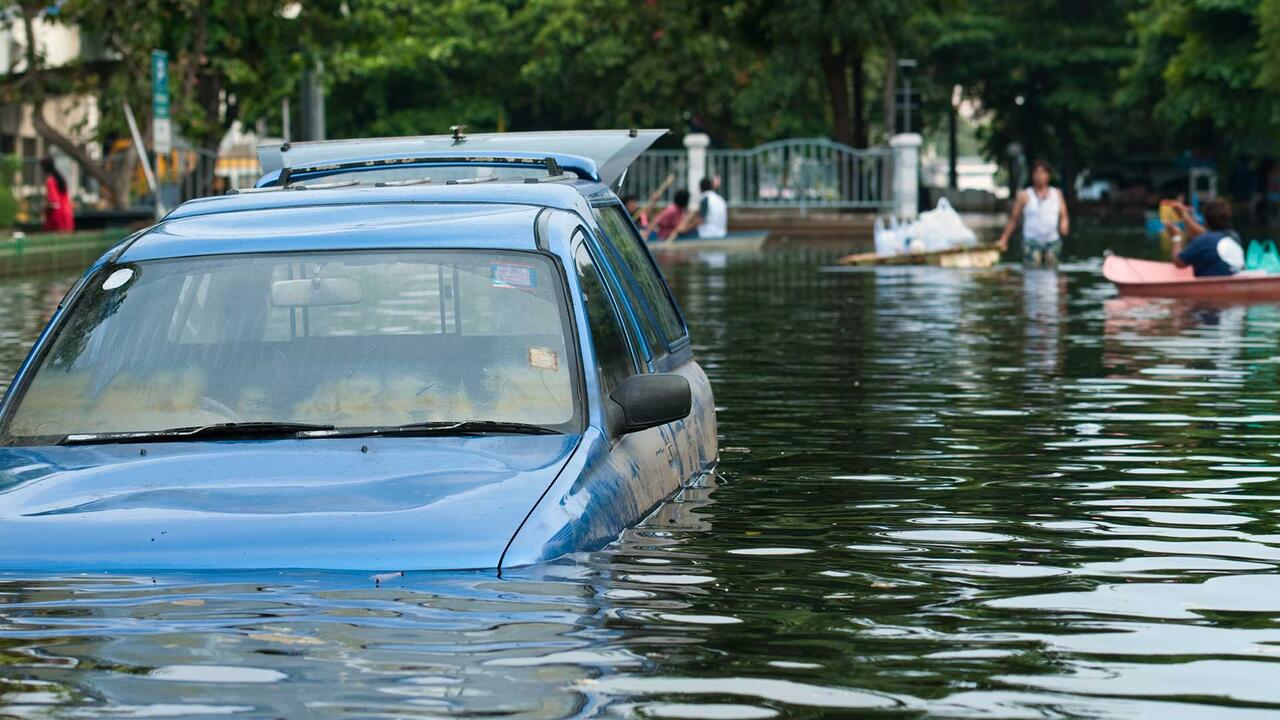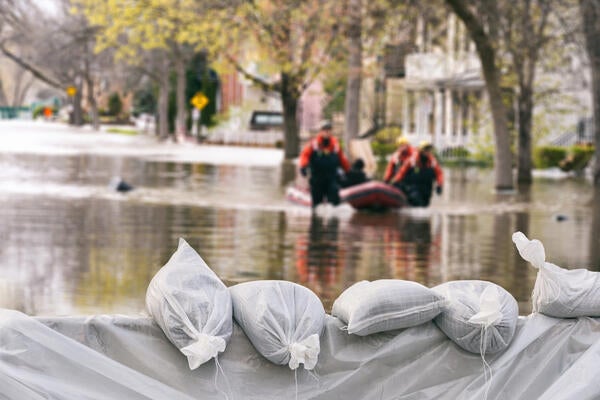
Can algorithms save lives during natural disasters?
Waterloo researcher creates algorithms that help first-responders find older people and those with disabilities who may be trapped in their homes during a natural disaster

Waterloo researcher creates algorithms that help first-responders find older people and those with disabilities who may be trapped in their homes during a natural disaster
By Rose Simone University Communications
John Hirdes
Professor, Faculty of Applied Health Sciences
> School of Public Health and Health Systems
Whenever disaster strikes, older people and those with disabilities are often the most vulnerable.
Whether it is a devastating heat wave, an ice storm, or the aftermath of a hurricane or earthquake, first responders need to quickly get to the people who are ill or those who have a hard time leaving their homes.
That’s where algorithms can help save lives.
John Hirdes, a professor in the Faculty of Applied Health Sciences at the University of Waterloo, has tackled the problem of how to find the most vulnerable people during and after a disaster by developing decision-support algorithms.
He uses tools that are already available for managing health care assessments. These assessment tools are used, for example, in deciding when a person needs home care through organizations like the Local Health Integration Networks (LHINs) in Ontario. The home care professionals go into the home of an older person or ailing patient and use clinical questionnaires to determine how much support the individual needs and what type of services.
What Hirdes, a quantitative health services researcher, realized was that all of this assessment information is now in data bases in different regions of the world. So those data bases could be put to use in disaster situations, allowing first responders to check on people who are the most vulnerable in a crisis.
Health care assessment data bases are already there, so there really isn’t a huge extra cost in extending that information for the purposes of disaster-risk assessment, Hirdes points out. Also, the home health care assessments are happening on a routine basis, which means the information is fresh and up-to-date.
Hirdes is part of interRAI, an international consortium of researchers from more than 35 countries who develop health care assessment tools.
Hirdes’ idea was first implemented during the Christchurch earthquake in New Zealand in 2011. When that earthquake struck, interRAI colleagues in New Zealand told him they wished they could have a disaster-response assessment system.
So Hirdes created an algorithm that would allow New Zealand to use its existing database to find the people in the evacuation zone who were at highest risk in the aftermath of the earthquake. The colleagues in New Zealand quickly coded the algorithms into their software, and soon enough, first responders had a list of people to check on. The minister of health in New Zealand publicly thanked interRAI for that contribution.
A couple years later, when a massive ice storm hit Ontario and eastern Canada, Hirdes and his then-PhD student Sandy Van Solm, who is now Waterloo Region’s emergency management co-ordinator, were able to use that event to refine and improve the algorithm to more accurately zero in on the individuals who might be shut-in during that storm.
The algorithms are being incorporated into the software provided by vendors to the various home care agencies across the country. The Canadian Institute for Health Information, an independent, not-for-profit organization, helps make that happen.
The disaster risk assessment algorithms include a variety of factors, ranging from whether the person is mobile or uses a wheelchair, to whether there are family members nearby who can respond to their need in the emergency situation.

Read more
Breakthroughs in big data, alternative fuels and energy storage offer hope for a sustainable future. But the real challenge is social and political – not technical.

Read more
Animated GIFs of shrinking Antarctic ice help people understand the impact of climate change. One ice shelf has lost the equivalent area of Prince Edward Island.

Read more
Waterloo researchers are developing the first national climate change flood-risk map to empower Canadians who are living in high flood-risk areas
The University of Waterloo acknowledges that much of our work takes place on the traditional territory of the Neutral, Anishinaabeg and Haudenosaunee peoples. Our main campus is situated on the Haldimand Tract, the land granted to the Six Nations that includes six miles on each side of the Grand River. Our active work toward reconciliation takes place across our campuses through research, learning, teaching, and community building, and is co-ordinated within the Office of Indigenous Relations.